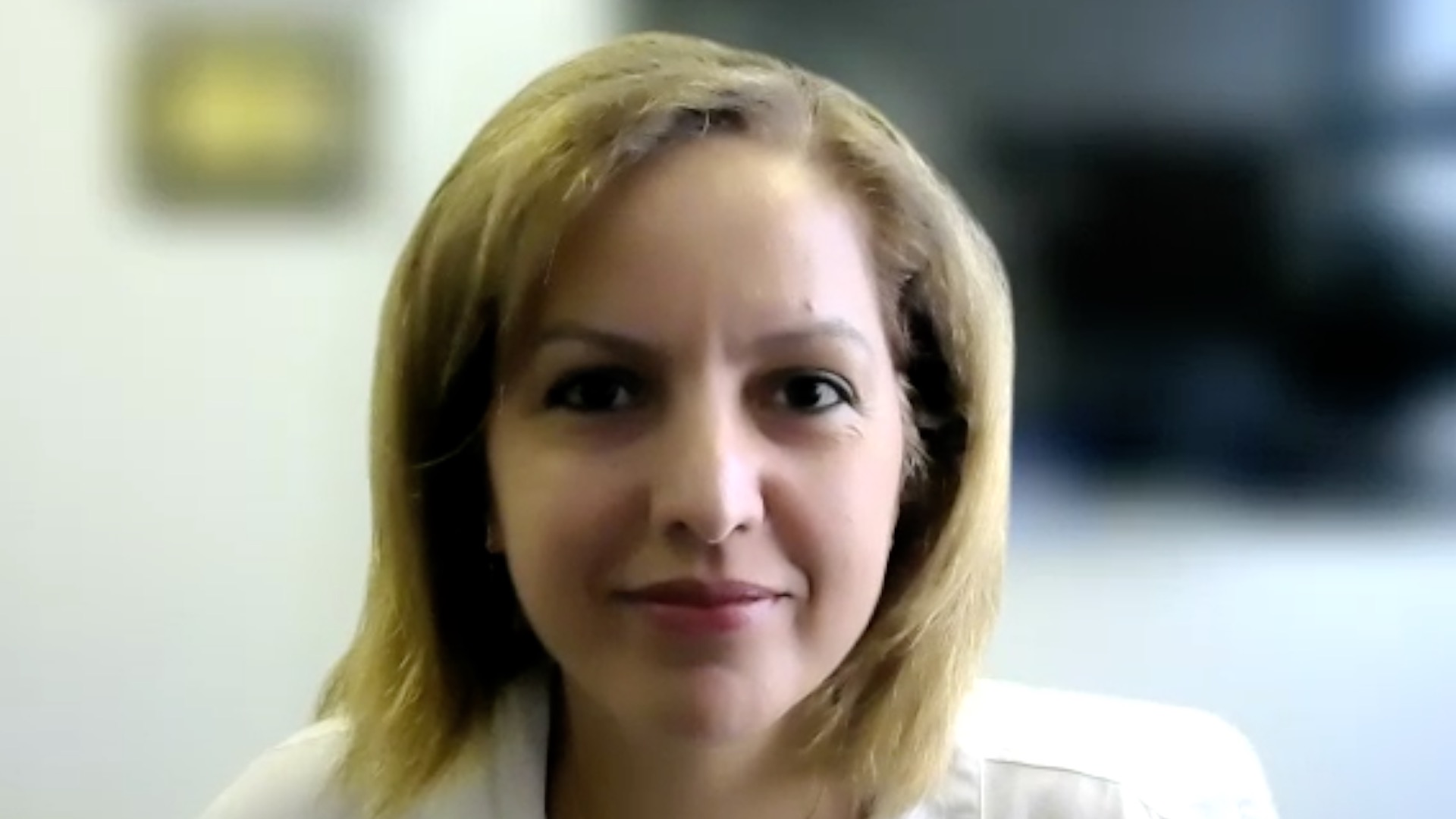Sina Jasim, ENDO23: Cytologic and Molecular Assessment of Isthmus Thyroid Nodules
Thyroid nodules arising in the isthmus are more likely to be malignant and demonstrate more aggressive behavior relative to thyroid nodules from either thyroid lobe. touchENDOCRINOLOGY were joined by Dr Sina Jasim (Washington University, St Louis, MO, USA) to discuss the main findings of her study presented at ENDO23.
The abstract ‘THU-680 – Cytologic And Molecular Assessment Of Isthmus Thyroid Nodules‘ was presented at The Endocrine Society (ENDO23) annual meeting in Chicago,15-18 June 2023.
Questions
- Could you tell us a little about isthmus thyroid nodules and how they are linked to thyroid cancer? (00:19)
- Please summarize the main aims and design of your study? (00:54)
- What were the key findings and conclusions made? (02:15)
- On the basis of these findings, what are your recommendations for future study? (04:04)
Disclosures: Sina Jasim has received grant/research support from Veracyte.
Support: Interview and filming supported by Touch Medical Media. Interview conducted by Sophie Nickelson.
Filmed as a highlight of ENDO 2023
Access more content on thyroid disorders here
Transcript
Hi, My name is Dr Sina Jasim. I’m an Associate Professor at Washington University in Saint Louis, and I take care of patients with thyroid nodules and thyroid cancer in particular and endocrine neoplasia.
There are multiple things that we look at when we talk about thyroid nodules and the risk of thyroid cancer, such as family history, clinical features, and sonographic features. In 2020, we published a thyroid journal with the observation that thyroid location – thyroid nodule location – can be linked to the risk of thyroid cancer. And in particular, instance thyroid nodules or no drugs located in the isthmus region of the thyroid are more likely to be cancerous. So due to the finding in 2020 in our paper published on the thyroid – that isthmus thyroid nodules tend to be more likely to be cancerous, we wanted to see why this behaviour – is it biological, is it because of location, Is it because of anatomy? So really the goal of this study was to interrogate various thyroid nodule databases to assist psychological and molecular differences of thyroid aspirate, by fine needle aspiration and send for a pharmacogenomic sequence testing, both from the isthmus nodule relative to the lower nodules. So the Affirma GSC is a really powerful molecular testing platform because they use the whole exome RNA sequences to identify molecular alteration and thyroid nodule. And so we interrogated this database to provide some molecular insight into some clinically relevant questions, such as the question that I proposed. And in this particular study, we looked at the potential reason that might lead to some differences in the behavior of thyroid isthmus relative to the nodules, and we analyze almost 180,000 thyroid nodule samples in this particular study, for the purpose of this study.
So the key findings in our abstract that we presented in the most recent Endo meeting that most Affirma nodules has, of course indeterminate psychology when they were sent to Affirma, which is Bethesda class three and four, and there were more indeterminate sample from thyroid lobes, 95.7% compared to the isthmus 91.8%. And for the bethesda five and six nodules, the proportion that came from isthmus was almost double that came from below. Particularly important for this study, the analysis of molecular alteration doing pharma testing for suspicious nodules or bethesda five and six nodules that showed the interesting finding that isthmus nodules are twice more frequently to have BRAF mutation compared to lower. And an increased frequency of other mutations such as Elk, NT, RK, and Brett fusion. And these are all significant statistically. We also noticed that lower nodules are more likely to have enras and etras, which are historically linked to milder forms of thyroid cancer.
In addition, isthmus nodules has significantly higher BRAF-like signatures, which correlates with more aggressive cancer, and Elk signaling, which is usually associated with a great greater tumor growth and survival. And follicular missing chimel transition score, which is typically correlated with a greater ability for thyroid cells to invade and metastasize and travel even outside the thyroid gland in comparison to lower nodules. And these are all statistically significant. So this study shows some biological signals that indicate that isthmus nodules might be at higher risk of being cancerous because of some molecular alteration. So this is really important because now we should look at the isthmus nodule slightly differently. We look at isthmus cancer probably differently. So I I think future studies should investigate this correlation with the final histopathology. As you know, these are all samples from thyroid nodule biopsy. And so it would be great to correlate these findings with final histopathology of these molecularly tested isthmus nodule and with the oncological outcome.
This is an area of ongoing investigation, and I can see prospective research study that could look into preoperative molecular finding of these nodules, in the isthmus otherwise, to alter the initial treatment of thyroid nodule in the isthmus or thyroid cancer in the isthmus and even the surgical approach and with the risk of recurrence and how we manage those cases. I think that would be really useful because that could potentially alter the management of thyroid cancer seen in the isthmus compared to the lobes.






